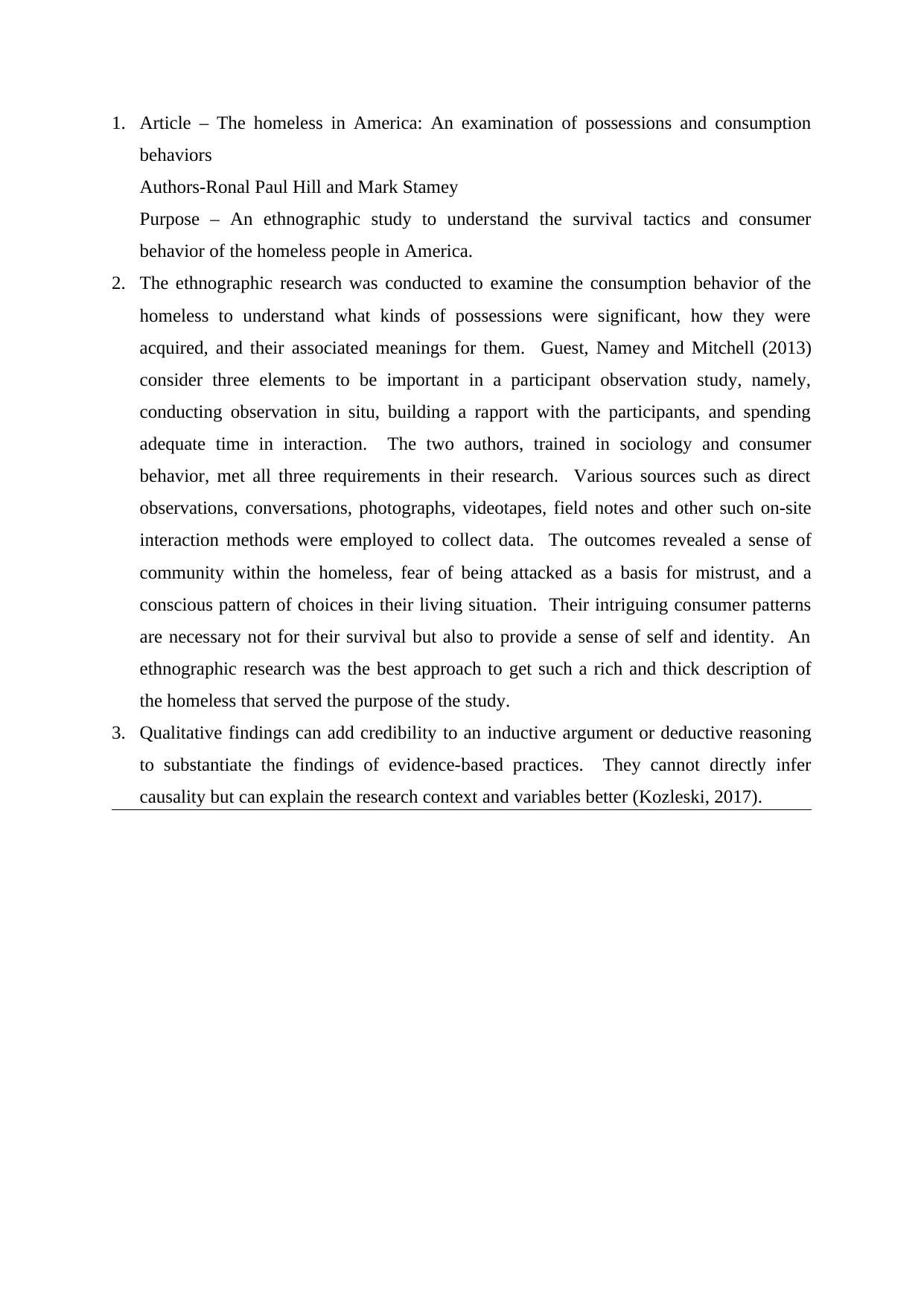Homeless in America: A Study on Consumption and Possessions
VerifiedAdded on 2022/08/13
|2
|384
|20
Report
AI Summary
This report presents an ethnographic study on the consumption behaviors of homeless individuals in America. Conducted by Ronal Paul Hill and Mark Stamey, the research utilized direct observations, conversations, and field notes to understand the significance of possessions, how they are acquired, and their meaning within the context of homelessness. The study reveals a sense of community, the influence of fear on trust, and conscious choices in living situations. It highlights the importance of consumer patterns not just for survival but also for establishing a sense of self and identity. The qualitative approach provides a rich description of the homeless experience, which can contribute to a deeper understanding of consumer behavior within this population.
1 out of 2


![[object Object]](/_next/static/media/star-bottom.7253800d.svg)